It’s summertime and our gardens are full of buzzing bees and fluttering butterflies. These charming insects are not only a quintessential sign of summer, but also the unsung heroes of our food system. Pollinators, like bees and butterflies, are facing numerous threats, but the great news is there are plenty of ways we humans can help!
Pollinators are the insects and animals that help fertilize plants, which enables them to produce fruits, seeds, and seedlings. Pollinators travel from plant to plant, whether to drink nectar from flowers or to feed off of pollen, which creates the movement of pollen that is necessary for fertilization. The diversity of native pollinators includes bees, butterflies, moths, beetles, birds, bats, and other small mammals.
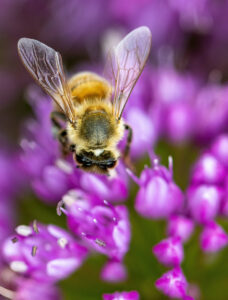
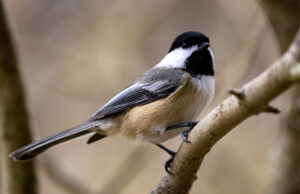
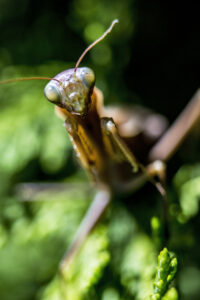
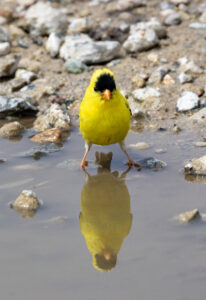
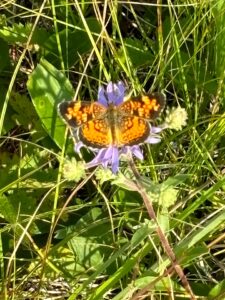
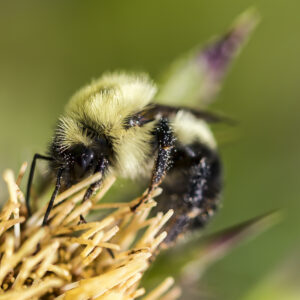
Bill Hoenk Photography (Photos 1-4, 6), Land Bank Staff (Photo 5)
While small in stature, pollinators’ significant impact on our food system is undeniable. Insects and animals provide pollination services to over 1,200 crops, including vegetables, fruits, seeds, and more (About Pollinators, n.d.). As a result, one out of every three bites of food you eat only exists due to the work of pollinators (U.S. Department of the Interior, n.d.). What’s more, according “to market prices, pollination by animals improves the global crop output by an additional USD 235–577 billion annually” (Khalifa, 2021).
Beyond their agricultural impact, pollinators are integral for healthy ecosystems. While some plants can be fertilized by wind, water, or self-pollination, at least 75% of all flowering plants on the earth require animal pollinators (U.S. Department of the Interior, n.d.)! These plants go on to prevent soil erosion, clean our air, supply oxygen, protect us from severe weather, and support wildlife.
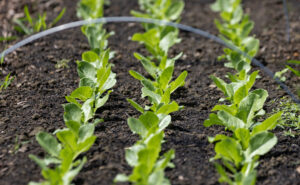
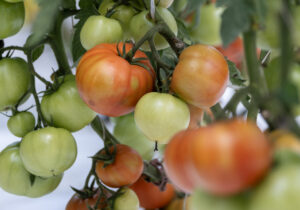
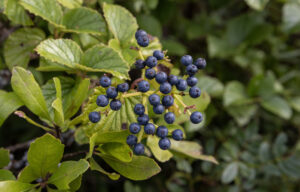
Bill Hoenk Photography
Unfortunately, these ecological powerhouses face significant threats in today’s world. “As of June 15, 2020, there are more than 70 species of pollinators currently listed as endangered or threatened,” according to the U.S. Fish & Wildlife Service (n.d.). Threats include habitat loss, climate change, invasive species, disease, and pesticide use, to name a few.
| Habitat Loss | Climate Change |
| As human development replaces native vegetation with roads, manicured lawns, crops, and more, there are fewer natural spaces for pollinators to feed, nest, and overwinter. | Warming temperatures are causing flowers to bloom and die earlier, before insects arrive for pollination. Fewer plants get pollinated, and insects go hungry. Climate change-induced drought and weather events impact pollinator habitat and food sources as well. Learn more. |
| Invasive Species & Disease | Pesticides |
| Invasive species can outcompete native plants for space and resources, reducing pollinator habitat. Additionally, invasive pests, like the varroa mite, can spread from non-native to native pollinators, causing declining bee populations (U.S. Department of Agriculture, 2023). | Pesticide poisoning is a major threat to pollinators, as pesticides can contaminate pollen grains and kill pollinator food sources (U.S. Department of the Interior, n.d.). |
Luckily, there are many proven conservation techniques that anyone can use to help pollinators thrive!
- Grow a pollinator garden | While pollinators face drastic habitat loss, you can create habitat right in your backyard. Learn how with U.S. Fish & Wildlife Service’s guide on How to Build a Pollinator Garden.
- Participate in “No Mow May” | Pollinator food sources are scarcer at the start of the growing season, making May the perfect time to take a break from mowing your lawn. By doing so, you could create critical habitat for your native pollinators!
- Support local organic farms | Here on Nantucket, we’re lucky to have several local farmers who utilize organic practices that are pollinator friendly.
- Practice Integrated Pest Management (IPM) | “IPM is a science-based, decision-making process” that helps reduce pollinator risk when it comes to pest control (U.S. Fish & Wildlife Service). Learn more from U.S. Fish & Wildlife Service’s guide on Reducing Risk to Pollinators from Pest Control.
- Education | Utilize the resources linked in this article to keep learning more and share them with your friends and family to help spread awareness!
- Advocate | Engage with your local and national representatives to advocate for the protection of pollinator habitat.
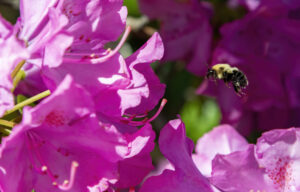
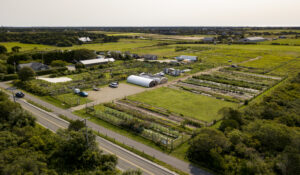
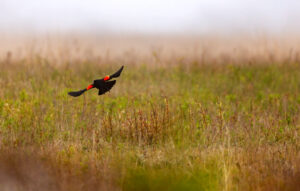
Bill Hoenk Photography
References
About pollinators. Pollinator.org. (n.d.). https://www.pollinator.org/pollinators
Khalifa, S. A. M., Elshafiey, E. H., Shetaia, A. A., El-Wahed, A. A. A., Algethami, A. F., Musharraf, S. G., AlAjmi, M. F., Zhao, C., Masry, S. H. D., Abdel-Daim, M. M., Halabi, M. F., Kai, G., Al Naggar, Y., Bishr, M., Diab, M. A. M., & El-Seedi, H. R. (2021). Overview of Bee Pollination and Its Economic Value for Crop Production. Insects, 12(8), 688. https://doi.org/10.3390/insects12080688
U.S. Department of Agriculture. (2023, April 5). What is a Varroa Mite?. Agricultural Research Service. https://www.ars.usda.gov/
U.S. Department of the Interior. (n.d.). Pollinators in trouble. National Parks Service. https://www.nps.gov/
U.S. Department of the Interior. (n.d.). What is a pollinator?. National Parks Service. https://www.nps.gov/subjects/pollinators/what-is-a-pollinator.htm
U.S. Fish & Wildlife Service. (n.d.). Threats to pollinators. FWS.gov. https://www.fws.gov/initiative/pollinators/threats

